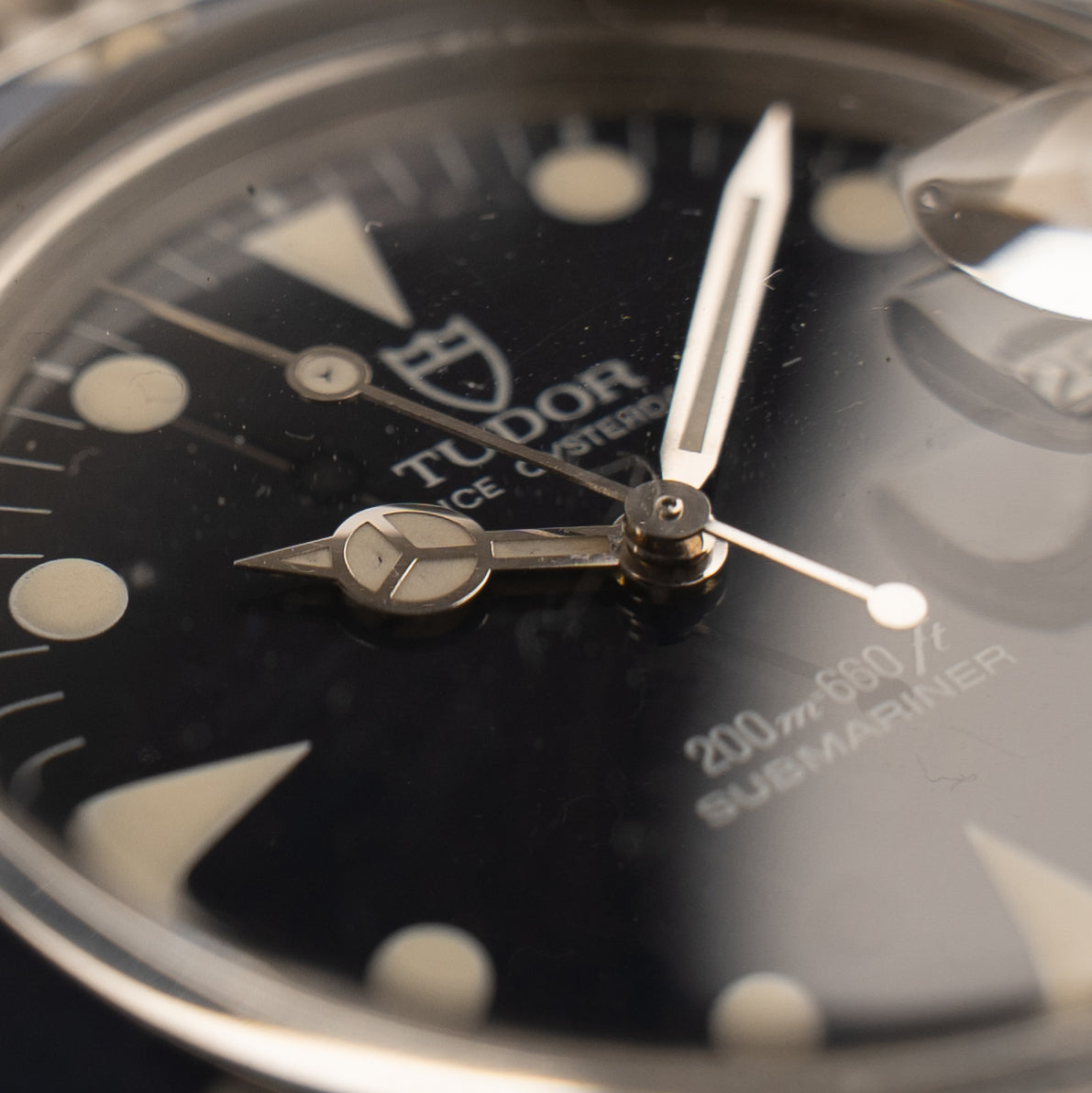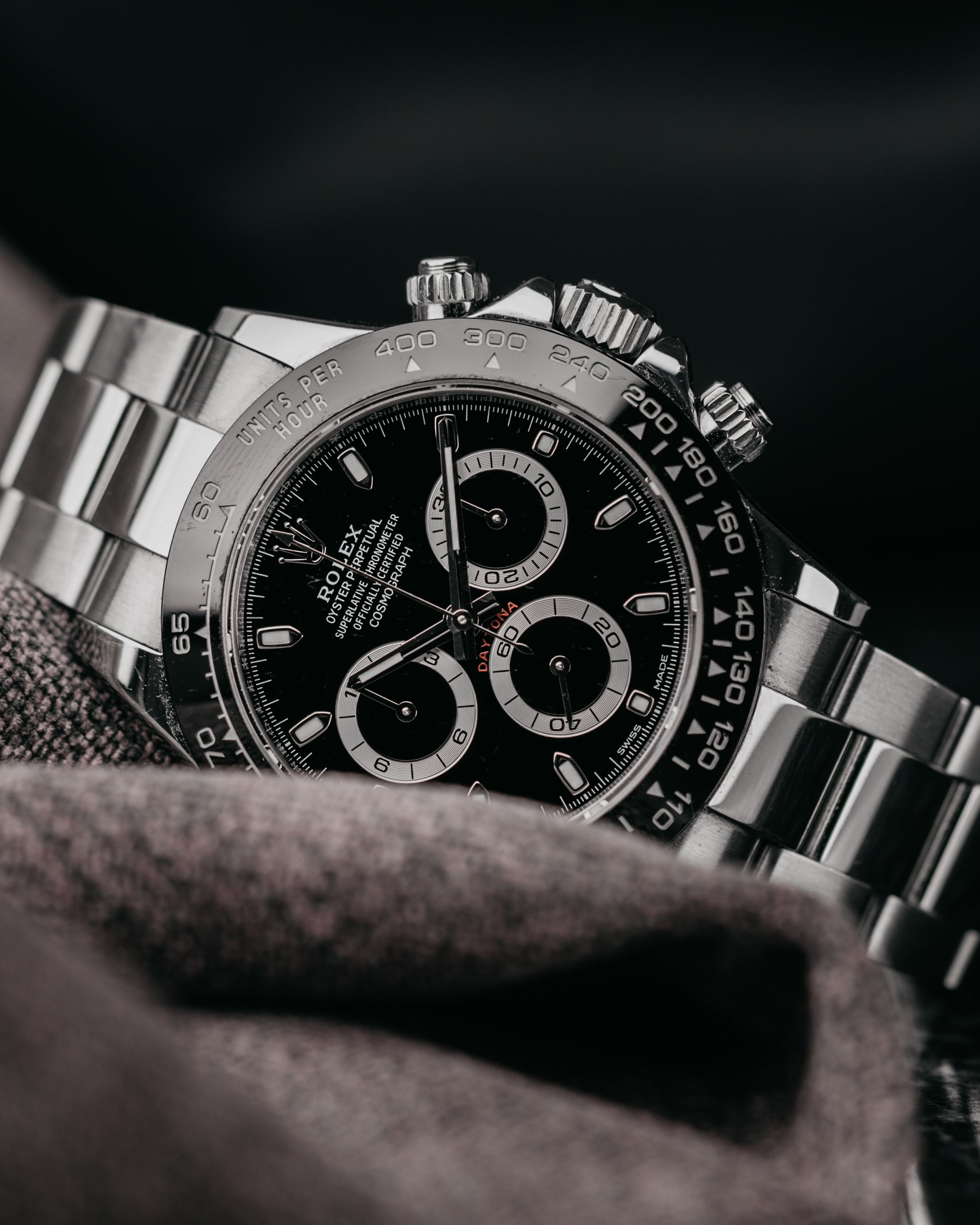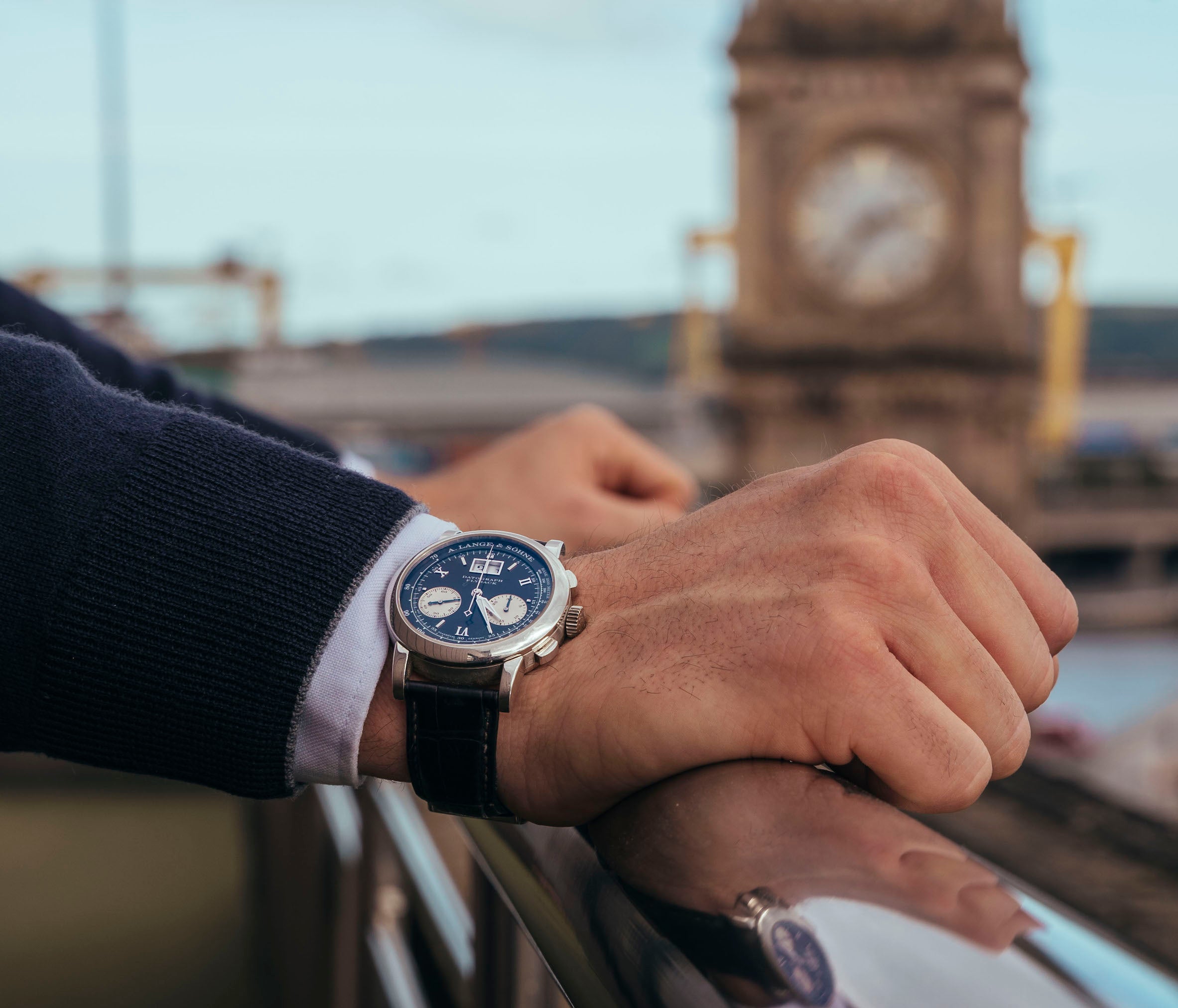
Tudor: Stepping Out of Rolex’s Shadow?
Tudor: Stepping Out of Rolex’s Shadow?
Written by: Alan Boal
Shortages of in-demand models, impatient buyers, dealer waiting-lists, second-hand watches trading above RRP... No, not Rolex, but instead their little brother, Tudor, stealing thunder that was once the near-exclusive preserve of Rolex. But just how did a brand that was almost dead & buried manage to re-emerge as such a success story?
It was the watch industry’s annual Swiss showcase event at ‘Baselworld 2018’ that finally sealed it. Tudor’s release of not one, but two, universally-acclaimed new models stole both the show and some of the limelight from Rolex. It cemented their growing reputation for offering a killer combination of technical innovation, attractive designs, high quality - and great value.
Their ‘Black Bay 58’ dive watch had watch fans clamouring to hand over their money, but Tudor upped the ante yet again, also announcing a new stainless steel GMT model, with a ‘Pepsi’ bi-colour bezel. Tudor found itself in the curious position usually only reserved for the likes of Rolex and Patek Phillipe, with customers demanding their hyped stainless steel sports watches but unable to lay their hands on them, inspiring both waiting lists and watches changing hands at more than their new RRP.
Quite the turnaround for a brand that had almost been mothballed not long prior.
Tudor: The Beginnings, and almost The End
Tudor’s history is closely linked to Rolex, with some early models bearing both brand names on their dial.
In 1905, Hans Wilsdorf, in partnership with his English brother-in-law, Alfred Davis, founded in London the company that would eventually become Rolex, but was then imaginatively titled ‘Wilsdorf & Davis’. Having also met his wife in England, and selected a Crown as Rolex’s logo, one might suspect Wilsdorf as having been a bit of an Anglophile, as he again borrowed imagery from the English Royal family for Tudor’s own logo, this time the Rose emblem of the House of Tudor.
Wilsdorf arranged for registration of the Tudor trademark in 1926, but it wasn’t until 1946 that he established it under a truly separate identity, as the ‘Montres TUDOR S.A.’ company:
“For some years now, I have been considering the idea of making a watch that our agents could sell at a more modest price than our Rolex watches, and yet one that would attain the standard of dependability for which Rolex is famous. I decided to form a separate company, with the object of making and marketing this new watch. It is called the Tudor watch company.” - Hans Wilsdorf
Benefitting from Rolex technology and marketed as durable, reliable tools for the working man, Tudor featured coal miners, stonecutters & construction workers in their adverts. The watches proved their military mettle in-service issue to the French Navy’s ‘Marine Nationale’ frogmen, on the 1952 British North Greenland Expedition and with the US Navy’s ‘SEAL’ Special Forces.
Tudor models shared names with Rolex such as Submariner, Prince & Oyster, and combined Rolex cases and bracelets with outsourced movements from the likes of ETA & Valjoux in order to keep prices low, but by the late 1990’s the range had become neglected and lacklustre, damned by many as the ‘poor man’s Rolex’, and pulled out of the major USA & UK markets altogether.
Tudor did not return to the USA until 2013, and the UK in 2014, under a fresh and vital re-branding, creating a distinct identity all of its own that did not lean upon Rolex or shared model names.
But just how did Tudor become one of the biggest success stories of recent times? Here are just a few reasons why:
- Heritage
One explanation for Tudor’s popularity is because they have answered customers’ desires by providing what Rolex can’t - or more accurately, won’t. Rolex excel at making a watch as progressively excellent as can be, but it does mean they have little truck with pandering to nostalgia.
Tudor happily filled this gap, revisiting a ‘greatest hits’ of fondly-recalled vintage features, such as the Black Bay’s large winding crown without guards (inspired by the Tudor Submariner 7924 from 1958, aka the ‘Big Crown’), gorgeously polished lug chamfers, drilled lugs to aid strap changes, old-style gilt dials, and domed sapphire crystals which harken back to the plexiglass used decades ago.
Watch design has stagnated in recent years, as brands have plundered their archives at the expense of producing much that is truly progressive and novel, and part of the blame for that might be laid at Tudor’s door, as their Heritage-inspired Black Bay proved a runaway success that inspired a legion of copy-cats.
However, few have been able to match Tudor in weaving elements of their past into something that still feels fresh & contemporary, and it’s difficult to argue against when they do it so well.
- Innovation
Though relying heavily upon their Heritage, that’s not to say Tudor lacks for technical innovation. The move away from using Third Party movements to manufacturing their own ‘in-house’, 70-hour power reserve, variable-inertia balance, COSC Chronometer-certified movements attests to that.
A major feature is their use of a hairspring made from silicon - the hairspring is the heartbeat of a watch, and the single most crucial timing element, requiring the durability to oscillate nearly 700,000 times daily. Silicon carries several advantages over traditional metal alloys, better resisting shocks, magnetism & temperature changes.
Even that signature ‘snowflake’ shaped hour hand has a purpose, created at the request of French Navy Divers to allow for greater legibility and luminosity underwater.
And - whisper it - but Tudor have a few welcome advancements that are lacking in big brother Rolex. One example is the use of ceramic ball-bearings in their bracelet clasps, as opposed to the usual stainless steel - as a much harder material, ceramic better resists wear, reducing the loose feeling than can occur in tired clasps opened & closed thousands of times over many years. Another neat trick is their rotating dive timer bezel, which features a novel ‘detent’ feature at the 12 o’clock position, providing a different, ‘hard stop’ feel to aid proper re-setting of the bezel to zero, even without looking.
- ‘Born To Dare’
An indisputable strength of Rolex is their consistency and a glacial, evolutionary-not-revolutionary approach to the development of watches – after all, a Submariner today looks much like a 1980’s Submariner. It’s part of what lends Rolex such time-enduring appeal, but it does mean their releases of anything adventurous can be few & far between, and at times ‘the Crown’ can appear a little bit, well, dull.
The same cannot be said of Tudor, who make a point of adhering to their ‘Born To Dare’ motto, regularly experimenting in ways that might provoke panic attacks in a conservative Rolex Executive.
What that means is cases made of interesting materials such as bronze, ceramic & titanium; sapphire crystal case backs that display the fascinating workings of the movement within; power reserve indicators on the dial; a novel left-hand ‘destro’ version of their Pelagos diver; and watches on brightly-coloured fabric straps, woven on antique Jacquard wooden looms by the same French weaver that produces for Chanel and the Vatican.
I suspect we’re more likely to see Rolex announce a collaboration with Michael Kors, than implement any of those in the near future.
- Value for Money
A common feature of luxury products is a hefty price tag, and watches are no different. Some might argue that value should bear little correlation to luxury as a concept - after all, it’s indulgence, exclusivity, artistry & emotion that drives a luxury purchase - but who doesn’t like to feel their hard-earned cash is well-spent?
By offering high quality at an attractive price, Tudor are steamrolling their competition.
For instance, Tudor’s Black Bay, a steel Dive watch on bracelet and with an in-house movement, retails for £2,800, whereas Omega’s equivalent (the 42mm Seamaster 300M), is £4,170. Admittedly the Omega has a ceramic bezel, display case back and Co-Axial technology, but it’s still quite a difference.
The discrepancy is even more startling when comparing Tudor to Breitling. In 2016, Tudor & Breitling began a movement-sharing collaboration – Tudor allowing Breitling to use their time & date MT5602, and gaining access to Breitling’s B01 Chronograph in return. Given both now share the same engines (a few tweaks & decorations aside), you would expect similar pricing, right? Wrong. Breitling’s 42mm steel Diver (the Superocean Heritage B20) is £1,010 dearer than Tudor’s Black Bay, with the same movement. Tudor’s Black Bay Chronograph sells at £3,830, whereas the 44mm steel Breitling Superocean Heritage Chronograph B01 retails for a whopping £6,300.
For the smart purchase in that tricky sub-£5k category, it’s hard to look past Tudor.
A Pretender to ‘The Crown’?
The re-birth of Tudor has been a soaraway success, striking a chord with watch buyers seeking interesting heritage, top-notch Swiss quality, superior designs, and technical innovation, all at sensible prices.
Whilst the Black Bay remains the mainstay of the brand, the innovative North Flag, vintage-inspired Ranger, varied Chronograph lines and high-tech Pelagos titanium 600 metre rated diver have all garnered acclaim in their own right. Their Advisor model even features an entirely mechanical alarm function.
No longer a ‘poor man’s Rolex’, but instead a complimentary line that has successfully melded vintage looks with contemporary watchmaking, a Tudor is now a legitimate choice in preference to a Rolex.



